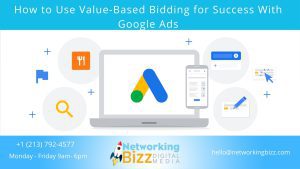How often do you start out reading an article on a website or blog, only to find yourself inadvertently signing up for a webinar or viewing a product demonstration? Like a moth to a flame, an intelligently placed call-to-action catches our attention and encourages us to take action.
 So what exactly is a call-to-action (CTA)? A call-to-action is simply a hyperlinked image or snippet of text that prompts us do something. By clicking through, we are taken to a landing page where we provide some personal information to receive what has been offered in the CTA.
So what exactly is a call-to-action (CTA)? A call-to-action is simply a hyperlinked image or snippet of text that prompts us do something. By clicking through, we are taken to a landing page where we provide some personal information to receive what has been offered in the CTA.
Why Are CTAs so important?
CTAs are a crucial piece of the internet marketing puzzle, and if done right, they subtly but effectively guide your blog, social media, or website visitors through the sales cycle and increase leads and conversion rates. By creating multiple calls-to-action, distributing them across your site, and optimizing them, you are well on your way to increased landing page traffic.
CTAs are often used for:
- Subscribing to newsletters.
- Downloading free eBooks, whitepapers, or other content.
- Viewing videos and product demonstrations
- Signing up for free trials
- Registering for webinars
- Purchasing services/products
How Do I Decide Where to Place a Call-to-Action?
 Generally, you will want to choose several CTAs that appear at different stages of the sales cycle. Hubspot recommends placing at least three CTAs on your home page and at least one on each page of your site. However, there is one place you do NOT want to include a call-to-action: your landing page. In this instance, try to remove anything (images, links, CTAs, navigation) that will distract your visitor!
Generally, you will want to choose several CTAs that appear at different stages of the sales cycle. Hubspot recommends placing at least three CTAs on your home page and at least one on each page of your site. However, there is one place you do NOT want to include a call-to-action: your landing page. In this instance, try to remove anything (images, links, CTAs, navigation) that will distract your visitor!
When deciding where to place your CTA, put yourself in the shoes of your customer. Where do they go when they reach your site? What are your most popular offers? Consider placing a call-to-action in these areas. If you aren’t sure, take a look at your analytics. By looking at visitor behavior data, you can predict what your perspective customers might be interested in seeing based on the pages they visit on the site.
Consider including a CTA on the confirmation page that appears after your visitor signs up for a product or service. This call-to-action should be a related service that your viewer might find helpful. For example, if you run a candy shop and someone has signed up for your newsletter, you might include a CTA on the thank you page for gift ideas that leads them to a product page where they can view and order candy gift boxes.
Perhaps you have an event, such as a webinar or special contest, coming up. You can include a CTA on your home page or other popular page that links directly to a registration page for your promotion or upcoming event.
How to Create a CTA
 There are several options available for creating CTA buttons and boxes.
There are several options available for creating CTA buttons and boxes.
- 1. Hire a professional graphic designer to create your CTAs.
- 2. Create them yourself using Microsoft PowerPoint or Word, Adobe Photoshop, or other similar products. There are many great YouTube videos and other online resources that can walk you through the process, regardless of the program you are using.
- 3. Another option for creating CTA buttons is Canva. This is a great website that offers many free options to create ads, social media images, call-to-action-buttons, and so much more.
Your calls-to-action can greatly enhance your internet marketing efforts, guide your visitors to all-important landing pages, and increase customer conversion rates and profits.

